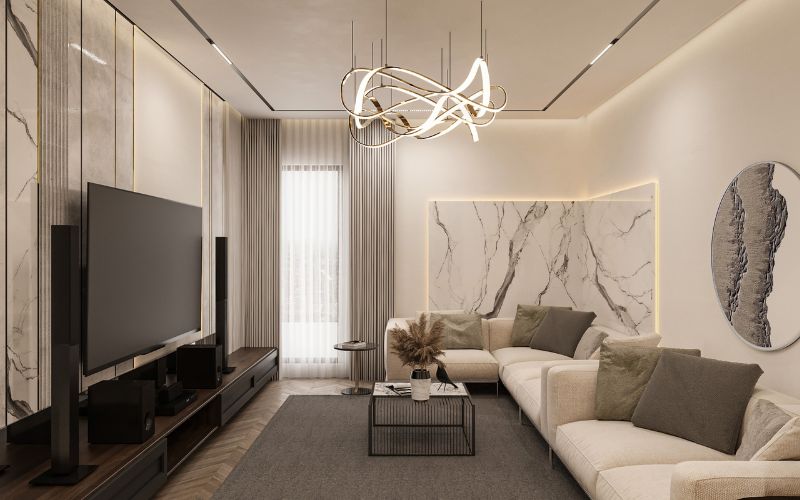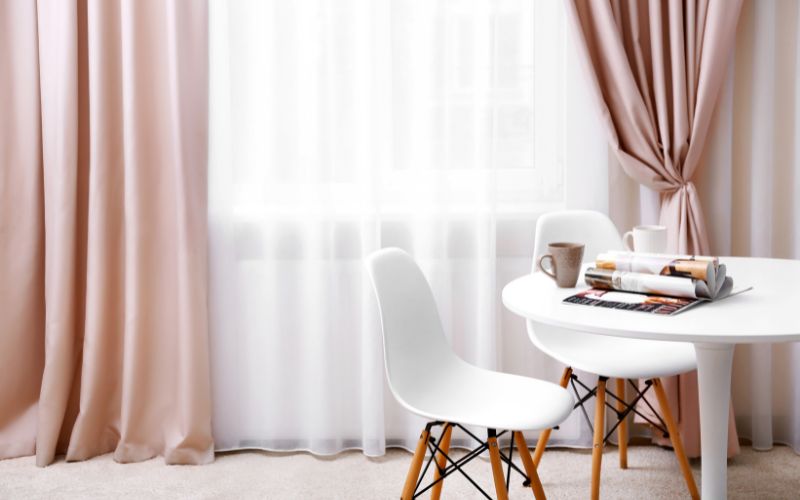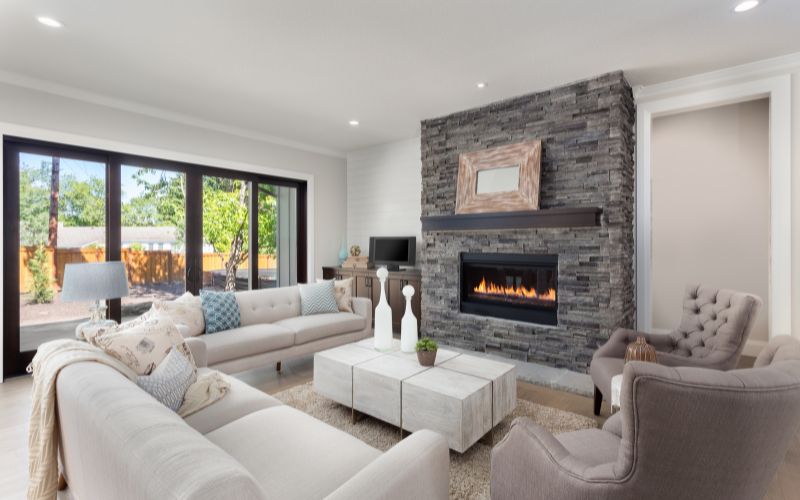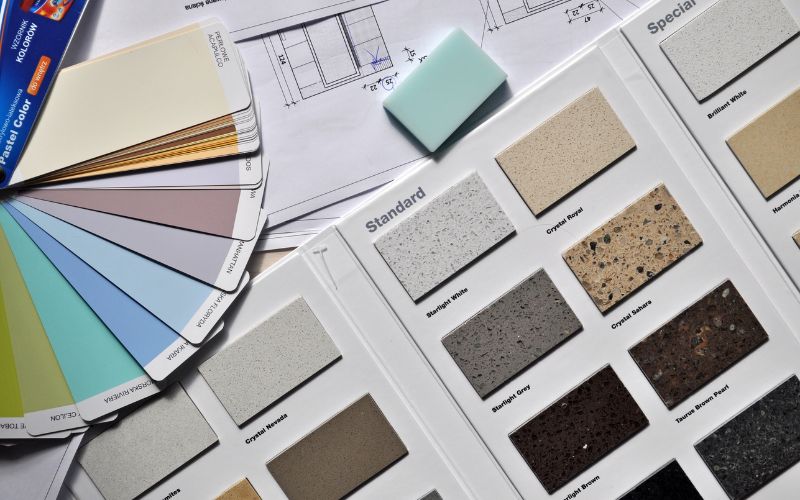When it comes to home renovation, there are many things to consider, and design is one of the most crucial elements. Good design can transform a house into a home, creating a space that is not only functional but also beautiful and personalized; whether you’re planning a complete renovation or want to refresh a few rooms, creative design ideas can make a big difference in your home’s overall look and feel.
This blog post will share ten creative design ideas for your home renovation. From statement walls to mixing old and new elements, using lighting as a design element, and playing with colours, these ideas inspire you to think outside the box and create a home that reflects your style and personality. Whether you prefer modern, traditional, or eclectic design, there’s something for everyone on this list. So, let’s dive in and explore these ten creative design ideas that can elevate your home renovation project to the next level.
Create a Statement Wall
A statement wall is a focal point in a room that draws attention and adds interest to the space. It’s a wall that stands out from the rest and creates a sense of drama and visual impact. A statement wall can be made using bold colours, patterns, textures, or materials, and it can be achieved through various design techniques.
How to Choose the Perfect Wall for Your Statement Wall:
Choosing the right wall for your statement wall is crucial as it will determine the overall impact of the design. Here are some tips on how to choose the perfect wall for your statement wall:
Consider the room’s layout and furniture placement: Choose a visible wall that complements the room’s layout and furniture placement. For example, if you have a sofa against the wall, choose the wall opposite the couch to create a focal point.
Look for walls with architectural interest: Walls with unique features such as alcoves, niches, or archways can create a stunning statement wall with minimal effort.
Pick a wall with a natural focus: Consider using a wall that naturally draws attention, such as the one behind the bed or the fireplace wall.
Different Ways to Create a Statement Wall:
Once you have chosen the wall, the next step is to create the statement. Here are some ways to create a statement wall:
- Paint: Painting a wall in bold is an easy way to create a statement wall. Consider using a bright hue, contrasting colour, or even a mural.
- Wallpaper is a great way to add patterns, textures, and colours to your statement wall. From geometric designs to floral prints, there are countless options.
- Tiles: Tiles can add texture, colour, and pattern to your statement wall. They work particularly well in bathrooms and kitchens.
- Wood panelling: Wood panelling can add warmth, texture, and depth to a statement wall. It’s an excellent option for creating a rustic or traditional feel.
Examples of Statement Walls for Inspiration:
Here are some examples of statement walls to inspire your home renovation project:
- A bold blue painted wall in a white bedroom
- A black and white striped wallpapered wall in a living room
- A tiled statement wall behind a bathtub in a bathroom
- A wood panelling statement wall in a rustic dining room
Add Texture and Patterns
Texture and patterns add depth, interest, and dimension to a room, making it visually appealing and inviting. They also help create a cohesive and harmonious look and feel in the space.
How to Incorporate Texture and Patterns in Different Areas of the House:
There are several ways to incorporate texture and patterns in different house areas, such as walls, furniture, and accessories. Some ideas include:
- Adding textured wallpaper or paint to walls
- Using patterned area rugs or throw pillows
- Incorporating textured or patterned fabrics for curtains, upholstery, or bedding
- Adding accessories like woven baskets or decorative vases
Examples of Different Textures and Patterns:
- Velvet and suede fabrics for a luxurious feel
- Faux fur or shaggy textures for a cozy touch
- Geometric prints for a modern and trendy look
- Floral or paisley patterns for a traditional feel
- Stripes or chevron patterns for a bold and graphic look
Tips on How to Mix and Match Textures and Patterns:
Mixing and matching textures and patterns can be tricky, but it’s a great way to add interest and depth to a room. Here are some tips to keep in mind:
- Choose a colour scheme and stick to it
- Vary the scale of the patterns for a balanced look
- Use solids or neutral colours to break up bold patterns
- Mix textures of different weights and materials for contrast
- Use patterned accents sparingly to avoid overwhelming the space
Incorporating texture and patterns into your home renovation project is an easy way to add visual interest and create a cohesive, inviting look and feel. With these tips and design ideas, you can create a beautiful, comfortable space that reflects your style.
Mix Old and New
Mixing old and new elements in interior design in Geelong is blending vintage or antique pieces with modern or contemporary styles. This approach can create a unique and personalized look that is timeless and fresh.
How to Incorporate Vintage or Antique Pieces into Modern Spaces:
Incorporating vintage or antique pieces into a modern space can be done in several ways, such as:
- Pairing an antique table with contemporary chairs
- Repurposing old furniture with a fresh coat of paint or new hardware
- Displaying antique accessories, such as mirrors or lamps
Examples of Different Ways to Mix Old and New:
There are numerous ways to mix old and new in interior design. Some examples include:
- Combining a vintage sofa with modern artwork and accessories
- Using antique doors as a headboard in a modern bedroom
- Incorporating antique lighting fixtures in a contemporary kitchen
- Displaying vintage books or collectibles on modern shelving
Tips on How to Balance Old and New Elements in a Space:
Balancing old and new elements in a space is critical to achieving a cohesive and harmonious look. Here are some tips to consider:
- Choose a dominant style and incorporate the other style as an accent
- Use a neutral colour palette to unify the space
- Choose pieces with similar textures or finishes to tie the look together
Mixing old and new elements in interior design is a great way to create a unique and personalized look in your home renovation project. By incorporating personality into your style, you can seamlessly blend vintage or antique pieces with modern or contemporary styles, achieving a timeless yet fresh aesthetic that reflects your individuality. Consider your interests, sentimental items, colors, and textures to create a space that feels authentically yours.
Use Lighting as a Design Element
Lighting is an essential aspect of interior design that can significantly impact a space’s overall look and feel. Here are some key points to consider when incorporating lighting into your home renovation:
Explanation of the Importance of Lighting in Interior Design
- Lighting is not only practical but also plays a crucial role in setting the mood and atmosphere of a room.
- Proper lighting can enhance a space’s colours, textures, and patterns, making it feel warm and inviting.
- Lighting can also highlight specific features or elements in a room, such as artwork, architectural details, or furniture.
Different Types of Lighting That Can Be Used
- Ambient lighting provides overall illumination to the space and sets the tone for the room. Ambient lighting includes ceiling-mounted fixtures, wall sconces, and track lighting.
- Task lighting is used to illuminate specific work areas, such as a desk, kitchen counter, or bathroom vanity. Examples of task lighting include table lamps, under-cabinet lighting, and pendant lights.
- Accent lighting draws attention to a particular feature or object, such as a painting, sculpture, or plant. Examples of accent lighting include wall-mounted picture lights, spotlights, and uplights.
How to Incorporate Lighting Fixtures as Design Elements
- Lighting fixtures can be functional and decorative, adding style and personality to a space.
- Pendant lights can add a modern or industrial touch to a room, while chandeliers can create a more traditional or glamorous look.
- Floor lamps can provide task lighting and serve as a decorative element, adding height and visual interest to a space.
Tips on How to Create a Mood with Lighting
- Use dimmer switches to control the intensity of the light and create different moods throughout the day.
- Combine different types of lighting to create a layered effect and add depth to a space.
- Consider the colour temperature of the light bulbs used, as warm or cool tones can affect the ambience of a room.
- Use lighting to highlight focal points or create a sense of drama and intrigue in a space.
Play with Colors
Colours play a crucial role in interior design. They can affect our mood, create a sense of space, and convey a particular style. In addition, adding colour to a space is an excellent way to inject personality and warmth into a room. This article will discuss the importance of colour in interior design, how to choose a suitable colour scheme for a space, and different ways to use colour.
Explanation of the Importance of Colour in Interior Design
Colours can create a sense of harmony, tranquillity, or excitement in a space. They can make a room feel bigger or smaller, cozier or more expansive, and convey a particular style or mood. Colours can also affect our emotions and mental well-being. Understanding the psychology of colour can help you make informed decisions when selecting a colour scheme for a space.
How to Choose the Suitable Colour Scheme for a Space
Choosing an appropriate colour scheme for a room can be challenging, but creating a cohesive and harmonious environment is essential. Here are some tips to help you choose the suitable colour scheme for your space:
Consider the room’s purpose: Your chosen colour scheme should reflect the room’s function. For example, a bedroom should be calming and relaxing, while a home office may require colours that promote focus and productivity.
Think about the natural light: The amount and quality of natural light in a room can affect your chosen colour scheme. For example, a room with a lot of natural light can handle bolder colours, while a darker room may require lighter shades.
Choose a base colour: Start with a neutral base colour, such as white, beige, or grey, and build your colour scheme around it.
Use the colour wheel: The colour wheel is an excellent tool to help you choose complementary and contrasting colours that work well together.
Different Ways to Use Colour in a Space:
Once you have chosen a colour scheme, there are many ways to use colour in a space. Here are some examples:
- Accent walls: Adding a bold colour to a single wall can create a focal point and add depth to a room.
- Furniture and accessories: Adding colourful furniture or accessories can bring a space to life and create interest.
- Artwork: Incorporating colourful artwork can add visual interest and tie together a room’s colour scheme.
- Textiles: Adding colourful textiles, such as rugs, curtains, and throw pillows, can add texture and warmth to a space.
Tips on How to Create a Mood with Colour
Colours can be used to create different moods in a space while building designers balance aesthetics with functionality. Here are some tips to help you create a specific mood using colour:
- Warm colours, such as red, orange, and yellow, can create a sense of warmth and energy in a room.
- Cool colours, such as blue, green, and purple, can create a sense of calm and relaxation.
- Neutrals like white, beige, and grey can create a sense of simplicity and sophistication.
- Bold and bright colours can create a sense of playfulness and excitement.
Incorporating colour into your interior design is an excellent way to add personality and warmth to a space. By understanding the psychology of colour and how to use it effectively, you can create a cohesive and harmonious environment that reflects your style and personality.






